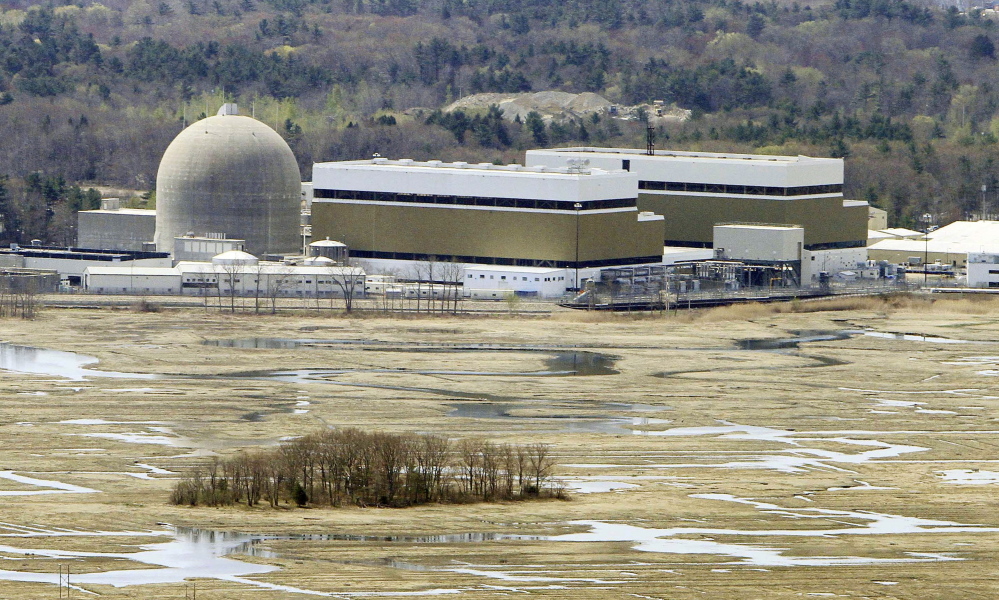SEABROOK, N.H. — The Seabrook Station nuclear power plant was conceived during the turbulent 1970s and was under construction when accidents at Three Mile Island and Chernobyl stoked fears of a global nuclear calamity.
Twenty-five years after Seabrook began commercial operations, the plant perches in a marsh on New Hampshire’s sliver of a seacoast, steadily producing electricity and still stirring plenty of emotions among opponents and supporters whose clashes made Seabrook the face of the national debate over nuclear energy.
And both sides still claim victory. The plant got built, utility officials said. Opponents counter that only half the plant got built and the country stopped building new ones for over 20 years.
“It was certainly an enormous struggle,” said Ted Feigenbaum, a former executive vice president at the plant from 1986 to 2002. “It was so vital to the nuclear industry.”
And vital to nuclear opponents.
“The concern of activists made things like Three Mile Island a major event, not a back-page event,” said Roy Morrison, an energy consultant who was arrested during protests in the 1980s. “When something like Chernobyl, or Fukushima – a global event – happens, there’s more global resistance.”
Seabrook’s history began nearly five decades ago when the Public Service Company of New Hampshire – now Eversource – announced in May 1968 that it would build a nuclear plant in Newington. The site was later changed to Seabrook before the project was shelved in 1969, mostly for financial reasons.
In 1972, PSNH resurrected the plan, proposing two reactors: the first to come online by 1979, the second in 1981, with a total cost of less than $1 billion. But that figure ballooned to $4.3 billion for the first unit alone by the time it was completed in 1986. The company scrapped the second unit the same year when it was already 25 percent complete. By the time the sole reactor came online commercially in August 1990, Seabrook had cost $6.2 billion.
Strident protests led to thousands of arrests over the years, including more than 1,400 in 1977 that put Seabrook on a world marquee.
Protesters brought ladders to scale the plant’s fences or took to the marshes to approach it by water. The Clamshell Alliance, so named because of concerns that a heated water discharge would harm shellfish, practiced nonviolent civil disobedience but some protests turned ugly. In 1979 and 1980, a splinter group ducked behind plywood shields and attacked the fences with bolt cutters, grappling hooks and ladders. Police and the National Guard used riot sticks, tear gas, fire hoses and dogs to quell the uprising.
Opponents worried, and still worry, about safety and evacuation plans that they scoffed would never work during the seacoast’s traffic-choked summer months. And they chafed at the industry-government tag team shoving the plant down their throats.
Burt Cohen, who served seven terms in the New Hampshire Senate, was already involved in the opposition when the protest got truly personal in 1981, the year he moved to Rye, within the 10-mile evacuation zone surrounding Seabrook.
“There was no question that the idea of evacuation was impossible,” said Cohen, who was arrested during a 1989 protest.
Over the 25 years that Seabrook has been in operation, it has been one of the safest, single-reactor plants in the nation. It had the fewest number of safety violations in the Northeast from 2000 to 2012 among those facilities, according to a report by the federal Government Accountability Office. Events that trigger a report can range from things like an employee unfit for duty to an ammonia spill. In March 2003, a plant worker saw a shadow cross his security monitor. An intruder alert was issued. It turned out a turkey had flown over the fence.
Seabrook produces 1,200 megawatts of electricity, enough to power 1.2 million homes. It has a 40-year license to operate, until 2030, and its owner, NextEra Energy, has already applied to the Nuclear Regulatory Commission for a 20-year renewal. A final decision is expected by September 2016.
Send questions/comments to the editors.




Success. Please wait for the page to reload. If the page does not reload within 5 seconds, please refresh the page.
Enter your email and password to access comments.
Hi, to comment on stories you must . This profile is in addition to your subscription and website login.
Already have a commenting profile? .
Invalid username/password.
Please check your email to confirm and complete your registration.
Only subscribers are eligible to post comments. Please subscribe or login first for digital access. Here’s why.
Use the form below to reset your password. When you've submitted your account email, we will send an email with a reset code.